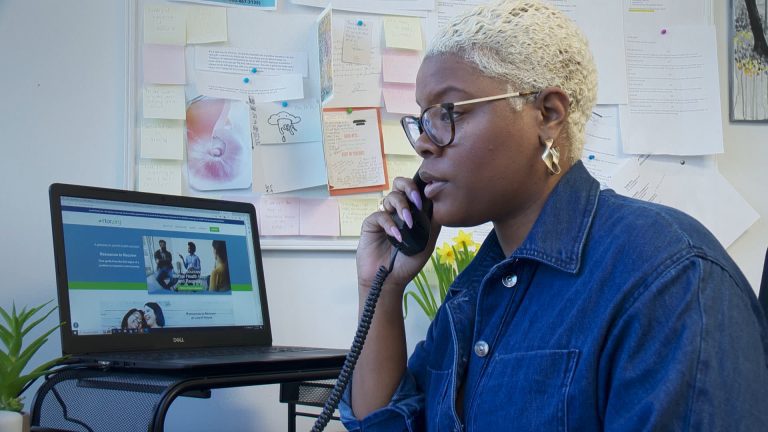First semesters are starting across the country, and college freshmen have immersed themselves in an environment unlike any they’ve been in before. Without parental oversight, this year’s 18-year-olds will begin the rites of adulthood, surrounded by large amounts and varieties of alcohol and drugs.
College freshmen are at the end of adolescence and the beginning of adulthood, figuring out their friends, dreams, boundaries, and tools of survival in the complex world surrounding them. The first weeks on campus are filled with different opportunities to explore this new world: partying with friends in their dorm, joining Greek life (or not), clubs, and classes. Some of these activities come with opportunities and strong encouragement to consume alcohol and other drugs.
Students are experimenting with a wide range of substances, including but not limited to alcohol, nicotine, cannabis, cocaine, MDMA/ecstasy/molly, psychedelics (shrooms, LSD), amphetamines (Adderall), painkillers & opioids, and benzodiazepines. Alcohol is the most frequently used, and cannabis is the second most frequently used 1,2. Nicotine use amongst adolescents and young adults has increased in the last 10 years, specifically via vaping3.
People use substances for a number of reasons. George’s story (see box below) highlights a few common themes for substance use in the college-specific context. It can be driven by availability and curiosity, often in the setting of minimal access before. Subgroup cultures influence which substances are consumed more frequently by college students. For example, rave culture uses more ecstasy, wealthier subgroups may use more cocaine, and fraternities may use more alcohol.
Not everything that’s tried turns into a habit. Most young adults who try substances do not end up with a significant problem. For others, one or two substances may develop into a chronic use pattern with concern for a substance use disorder. At some point, life inhibits the ability to continue consumption of certain substances. Continuing to consume substances despite these natural inhibitors is an indicator of a more serious problem, which may require professional help.
For George, he slowed down his alcohol consumption after college. He initially had a bad trip with psychedelics. With more research and use, he was able to enjoy it but no longer prioritizes those experiences. He does consume a large amount of cannabis, however, and is at risk of developing a cannabis use disorder.
So, when do we get worried?
In the acute setting, there are several things to look for and respond to:
- Fentanyl is in the drug supply! With any powder or pill-form substance, there is a concern for fentanyl contamination. Substances can be tested with fentanyl test strips.
- Accidental or intentional opioid overdose presents with stupor, slow breathing, slow heart rate, and minimal reactivity. It can be reversed with NARCAN/naloxone then calling Emergency Medical Services (EMS).
- Alcohol poisoning can present with mental confusion, difficulty remaining conscious, vomiting, clammy skin, slow heart rate, trouble breathing, and seizures. If you are worried, call EMS.
- Bad trips on psychedelics can be very scary. First, help the person find a safe and calming place to ride it out. If this is not possible or the trip lasts longer than expected, call EMS.
- Driving under the influence is dangerous for intoxicated individuals and other community members. Some solutions include UBER/LYFT, campus shuttles, or using a designated driver.
- Consumption of alcohol and other drugs is associated with both committing and being victim to sexual violence 4,5.
Many schools have “Good Samaritan” or “Immunity” laws that allow students to call Emergency Medical Services (EMS) for themselves or a classmate who is intoxicated without worrying about disciplinary or legal action. EMS can assess the situation and determine if patients need to go to the emergency room.
If you or a loved one experiences any form of unwanted sexual contact, please go to the emergency room for post-sexual assault care and the option for a sexual assault forensic exam. Many schools also have campus-based resources to support survivors and prevent the perpetuation of gender-based violence. The national sexual assault hotline, RAINN, is available at 800-656-HOPE (4673) and online at https://hotline.rainn.org/online.
In the long term, it is critical to continuously reflect on one’s relationship with substances. Similar to relationships among people, conceptualizing your relationship with substances as healthy, unhealthy, abusive/toxic can be very helpful. At the core of healthy use is an understanding of personal and family history, preparedness for emergencies, and specific intentions. As substance use moves away from healthy, the use frequency and amount increases, the safety of use decreases, and there are more adverse impacts.
- Healthy
- Use: infrequent (<1/week), low volume
- Reason: social celebration, recreation, ritual
- Impact: does not interfere with life
- Unhealthy
- Use: frequent, moderate volume
- Reason: managing negative emotions, crutch in social settings, boredom
- Impact: mild side effects, minor behavior changes to accommodate consumption
- Toxic
- Use: daily, high volume
- Reason: dependence, avoiding withdrawal, compulsion
- Impact: withdrawal symptoms upon abstinence, interferes with responsibilities (school, work), harms relationships, causes financial strain, lying about substance use
Many unhealthy or a few toxic signs indicate a person likely needs more support. The best place to start for anyone who is struggling is with a trusted clinician. George, for example, might start by discussing his cannabis use with his primary care doctor. Effective treatments and support services exist, from therapists to addiction psychiatrists, outpatient to inpatient rehab, and more. Most people who use substances in college do not go on to have substance use disorders, but early intervention is key.
Testimony from “George,” an alum of MIT…
“During that time, I went from only ever having had a sip of alcohol with my parents to drinking and smoking weed pretty regularly, I also tried acid and shrooms during that time.
With alcohol, it was mostly just because I saw everyone else around me doing it and it was an easy way to cope with the social awkwardness of freshman year. I still drink occasionally, but on average, I probably only have a few drinks a week.
I started smoking the summer after sophomore year because I was curious, but really started picking up my smoking rate a lot after my breakup that year when I was spending more time in the fraternity [with people] who were smoking. Still am doing that every day and probably way too many times a day.
The psychedelics, I tried the first time mostly because I was depressed and looking for a break from my normal routines. I didn’t like it that much at first, but tried a few more times over the years and ended up enjoying the experiences a lot more once I better understood how to prepare for them. I haven’t done acid in years, and at this point, I haven’t done shrooms in over a year either just because they’re just too intense and take too much time.”
About the Authors:
Meghan Davis is an MD/PhD student at Weill Cornell who works in gender-based violence prevention/response and addiction medicine/harm reduction.
Dr. Jonathan Avery is the Vice Chair for Addiction Psychiatry at Weill Cornell-New York Presbyterian.
Sources:
- Harmful and Underage College Drinking | National Institute on Alcohol Abuse and Alcoholism (NIAAA). Accessed September 13, 2024. https://www.niaaa.nih.gov/publications/brochures-and-fact-sheets/college-drinking
- Welsh JW, Shentu Y, Sarvey DB. Substance Use Among College Students. Focus J Life Long Learn Psychiatry. 2019;17(2):117-127. doi:10.1176/appi.focus.20180037
- Johnston LD, Miech RA, O’Malley PM, Bachman JG, Schulenberg JE, Patrick ME. Monitoring the Future National Survey Results on Drug Use, 1975-2019: Overview, Key Findings on Adolescent Drug Use. Institute for Social Research; 2020. Accessed September 13, 2024. https://eric.ed.gov/?id=ED604018
- Johns Hopkins Center for Injury Research and Policy. Reducing Alcohol-Related Sexual Assault on College Campuses: A Public Health Approach. Johns Hopkins Bloomberg School of Public Health; 2020.
- Dardis CM, Ullman SE, Rodriguez LM, Waterman EA, Dworkin ER, Edwards KM. Bidirectional associations between alcohol use and intimate partner violence and sexual assault victimization among college women. Addict Behav. 2021;116:106833. doi:10.1016/j.addbeh.2021.106833
Photo by Pavel Danilyuk: https://www.pexels.com/photo/a-man-talking-to-his-friends-while-holding-a-beer-bottle-7776218/
The opinions and views expressed in any guest blog post do not necessarily reflect those of www.rtor.org or its sponsor, Laurel House, Inc. The author and www.rtor.org have no affiliations with any products or services mentioned in the article or linked to therein. Guest Authors may have affiliations to products mentioned or linked to in their author bios.
Recommended for You
- The Truth about Relapse in Addiction Recovery - April 14, 2025
- The Power of Peer Support in Mental Health Recovery - April 10, 2025
- Artificial Intelligence in Anxiety Management: How AI Helps Users Cope with Anxiety Symptoms - April 3, 2025







